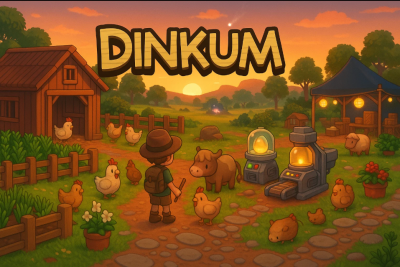Creating Natural Transitions and Whimsical Roads in Dinkum – A
-
Building in Dinkum is one of those experiences that blend creativity and strategy in the most relaxing way possible. Whether you’re developing a bustling town or carving out serene forest paths, the charm of this cozy life-sim lies in how much freedom it offers to shape your island. In this latest project, the creator focused on refining pathways, experimenting with materials, and crafting natural transitions between town and wilderness—all while giving practical insight into managing dinkum items and creative building flow.
Building the Foundation – Pathways and Transitions
One of the most impressive aspects of the build is how the creator reimagined the road system. Instead of sticking with the standard in-game road texture, they used cement paths and hardwood paths to create a softer, more magical feel. The combination of materials gives each section of the island a distinct atmosphere: the cement roads suggest structure, while the wood adds warmth and a handcrafted touch.
To make the environment feel more alive, the creator integrated natural transitions—like narrow dirt trails leading from paved roads into forest zones. These subtle details make the world feel less segmented and more cohesive, as if the island evolved naturally over time. When designing your own island, experimenting with path types and adjusting their width (for example, reducing double-tile dirt roads to single-tile) helps maintain visual balance and realism.
Creative Mode Tips – Managing Dinkum Items Efficiently
During the build, the creator gave a brief but useful overview of creative mode, showing how to browse, search, and organize the full library of dinkum items. For PC players, this tool offers flexibility—letting you pull up anything from decorative fences to rare plants with a simple search.
Typing keywords like “path” or “lamp” quickly filters your options, saving time when experimenting with different looks. You can also adjust item quantities (1, 25, 50, or 100) before adding them to your inventory—perfect for bulk projects like paving or landscaping. For players looking to expand their item collection outside the game, it’s common to buy dinkum items from trusted community-driven marketplaces such as U4GM, which many players use to acquire materials or rare decorations more conveniently.
Landscaping and Layering – Making Depth Feel Natural
A standout moment in the video was the creative use of terrain height and layering. Instead of keeping everything flat, the builder dug out sections of earth to create sunken tree beds, added varied tree heights, and mixed in bush types to build depth. This multi-layered approach makes each area look dynamic rather than repetitive.
For players experimenting with natural builds, the key takeaway is variety. Using different tree growth stages and alternating between flora types—such as hibiscus, common heaths, and mushrooms—adds organic texture. The creator’s choice to grow blackwood trees in staggered holes, surrounded by bushes and glowing mushrooms, demonstrates how small changes in vertical dimension can drastically improve realism.
Fence Variety and Spatial Definition
Fencing is often underestimated in Dinkum design, but here it plays a major role in defining space. The builder alternated between hardwood fences, hedges, and rope fences, using each type to represent a change in tone—from rustic rural areas to structured town zones.
The later discovery of the board fence (similar to the iconic vertical fence from Animal Crossing) added another layer of customization. This fence perfectly separates urban areas from the more natural, forested ones while keeping the overall theme cohesive. The alternation between fence types, combined with decorative shrubs and flowerbeds, adds rhythm and harmony across the island.
Atmosphere and Lighting – Bringing the Island to Life
As the finishing touch, lighting played a subtle but effective role. The creator opted for hardwood lamp posts instead of bright lanterns to maintain a soft, cozy glow that matched the wooden textures used throughout the build. Good lighting doesn’t just improve visibility—it sets the mood. Placing lamps near intersections, stairs, and focal points like bridges ensures that your island feels both functional and inviting after sunset.
What makes this build so inspiring isn’t just its aesthetics—it’s the thought process behind it. The creator constantly re-evaluated their choices, balancing form and function while keeping the island’s “whimsical forest town” vision intact. The tips shared—like experimenting with materials, mixing natural and structured designs, and using creative mode efficiently—offer practical insights for any Dinkum player looking to enhance their island.
Whether you’re just starting your first layout or reworking an established base, remember that Dinkum rewards experimentation. Don’t hesitate to adjust your builds, mix dinkum items creatively, or even buy dinkum items from U4GM if you want to speed up your progress. Every design choice brings your island one step closer to feeling truly yours.
